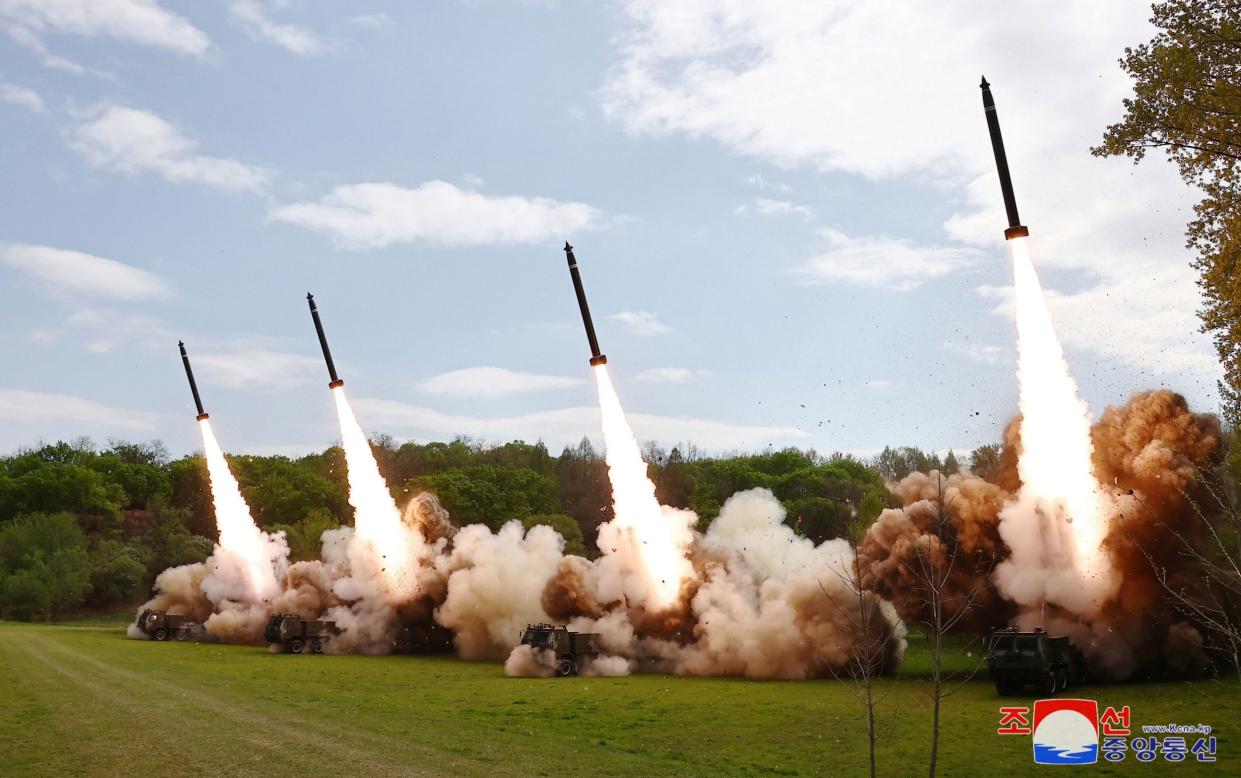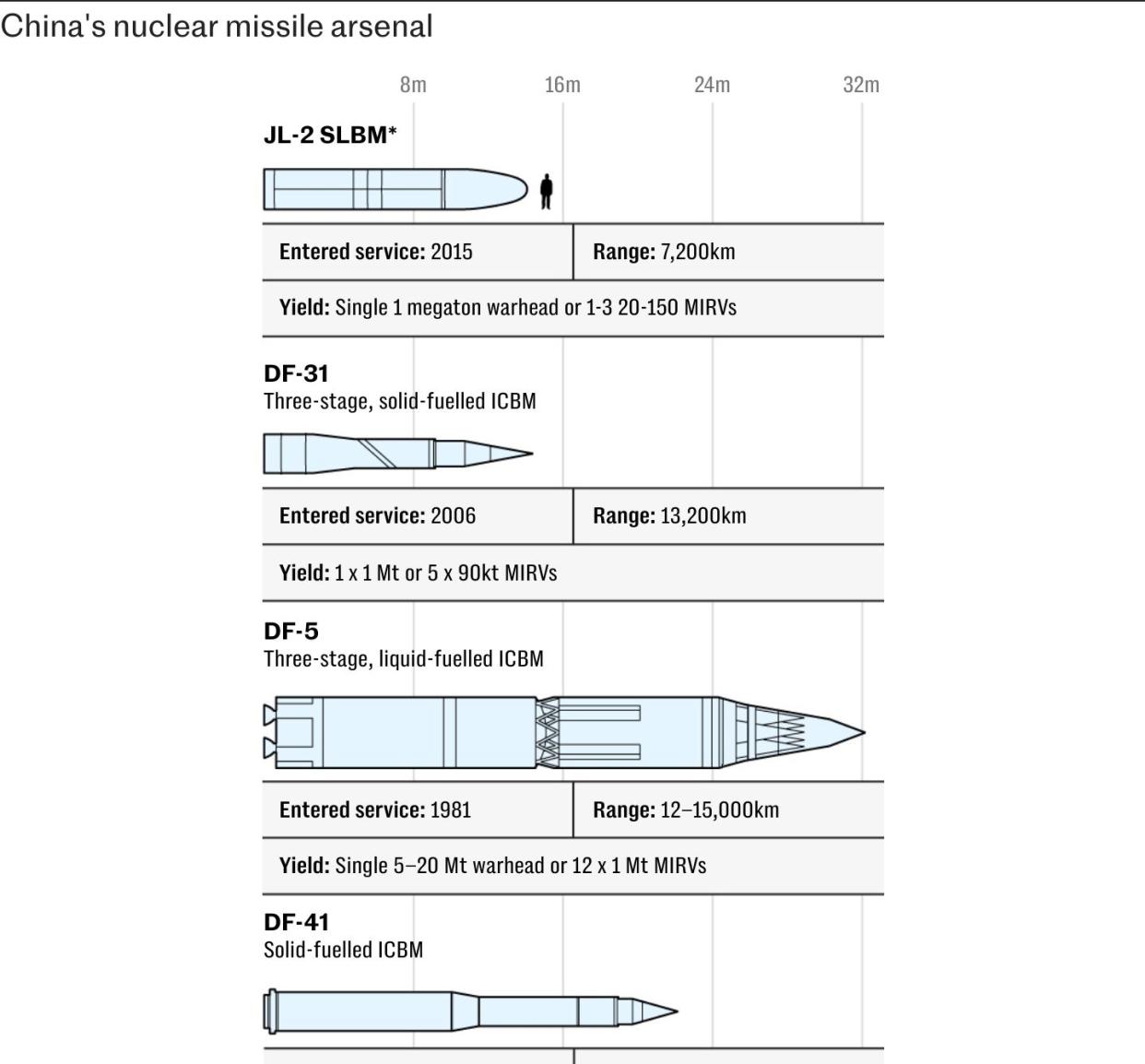US prepares for threat of joint Chinese, Russian and North Korean nuclear strike

The United States is making plans to counter the growing possibility of a joint Chinese, Russian and North Korean nuclear strike, according to a classified Pentagon document.
In March, Joe Biden, the US president, secretly approved a significant change to America’s nuclear defence plan, The New York Times reported.
For the first time, the move has focused the US “deterrence strategy” on China’s rapid expansion of its nuclear arsenal. It also aims to address the threat of coordination between Beijing, Moscow and Pyongyang, according to the US newspaper.
The redirection reflects a deeper understanding of Chinese president Xi Jinping’s nuclear weapons ambitions as well as a recent deepening of strategic military and political partnerships between China, Russia and North Korea.
Last October, a Pentagon report revealed that China’s nuclear weapons stock had more than doubled in the previous three years, in what officials described as a “major expansion of their nuclear forces”.
The Pentagon’s China Military Power Report estimated that, as of May last year, China had around 500 operational nuclear warheads, which would increase to 1,000 by 2030 and 1,500 by 2035, roughly matching the numbers currently deployed by the US and Russia.

An official at the time said this put China on track to exceed previous projections.
Defence experts also warned that the US should not underestimate President Xi’s strategic move towards acquiring greater nuclear might.
“As US-China relations deteriorate and China embarks on a large-scale build-up of its nuclear forces, the security risks are rising,” Tong Zhao, a senior fellow at the Carnegie China Research Centre, wrote in a paper on China’s changing nuclear policy last month.

According to The New York Times, the White House did not publicly announce its revised strategy, named Nuclear Employment Guidance.
The highly classified document, updated every four years, only exists on paper in the hands of a small cohort of national security officials and Pentagon commanders. There are no electronic versions.
However, the pivot towards China was alluded to in carefully calibrated public comments by two senior administration officials, ahead of a more detailed, unclassified notification of Congress.

Pranay Vaddi, the National Security Council’s senior director for arms control and nonproliferation, indicated that the document was the first to examine whether the US was ready to respond to simultaneous or sequential nuclear crises.
Mr Vaddi said the new strategy emphasised “the need to deter Russia, the PRC and North Korea simultaneously,” referring to the People’s Republic of China.
Separately, Vipin Narang, another official and a professor of nuclear security at Massachusetts Institute of Technology, said the president had “recently issued updated nuclear weapons employment guidance to account for multiple nuclear-armed adversaries”.
He added that the guidance had, in particular, accounted for “the significant increase in the size and diversity” of China’s nuclear arsenal.
China was referenced in the 2020 nuclear guidance but it was issued before the extent of Beijing’s plans were revealed.
As he left the Pentagon, Mr Narang warned: “It is our responsibility to see the world as it is, not as we hoped or wished it would be.”
He said it is “possible that we will one day look back and see the quarter-century after the Cold War as nuclear intermission”.
There is “the real possibility of collaboration and even collusion between our nuclear-armed adversaries,” he added.
Mallory Stewart, the assistant secretary for arms control, deterrence and stability at the State Department, told the New York Times that Beijing was “actively preventing” the two governments from having discussions about improving nuclear safety.
She said China “seems to be taking a page out of Russia’s playbook that, until we address tensions and challenges in our bilateral relationship, they will choose not to continue our arms control, risk reduction and nonproliferation conversations”.
Vladimir Putin has repeatedly threatened to use nuclear weapons since he launched a full-scale invasion of Ukraine in February 2022.


